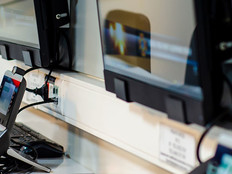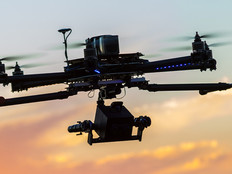Los Angeles Wants Tech to Liberate Police Officers from Administration
Los Angeles Mayor Eric Garcetti wants police officers spending more time in the field and less behind their desks — and his plan to accomplish that goal lies in technology, not hiring.
At a City Hall news conference on March 22, Garcetti lamented the amount of time Los Angeles Police Department officers must dedicate to filing reports, according to MyNewsLA.com.
“Some people say we need 12,000 officers,” Garcetti told reporters. “I say, ‘What would you rather have, 12,000 officers or 10,000 officers with 20 percent more time out on the streets?’ To me, it’s a no-brainer.”
Garcetti’s city budget includes $13 million for upgrades to LAPD’s aging workstations and other time-saving technology that will mean the city’s officers can spend more time on patrolling and enforcement actions. At the press conference, Garcetti stated that the total need over three years would come to $80 million and would come from a mix of public money and funds privately raised by the Los Angeles Police Protective League, the LAPD’s labor union.
Officers Spend More Than Half Their Time on Administration
A 2016 Pew Research Center survey found 86 percent of officers felt their departments did not have enough officers to adequately police their communities. But Garcetti’s argument is not that there are too few officers; rather, the officers already in place are having their time mismanaged.
The “2018 Role of Technology in Law Enforcement Paperwork” annual report, conducted by Nuance Communications, offers the results of a survey of 12,000 police chiefs and their command staff. Nuance found that 39 percent of respondents reported spending three to four hours per day on incident reporting and other record-keeping. Thirteen percent spent more than four hours.
In May, LAPD Chief Michel Moore told the city’s Budget and Finance Committee that his department falls into the latter category, with officers spending more than half their time on administration, NBC Los Angeles reports. Moore stated that the department had not updated its approach to reporting in 25 years.
For the LAPD, at least part of an officer’s administrative time is wasted on waiting for workstations to boot up — sometimes, Garcetti said, as long as 20 minutes, reports StateScoop. StateScoop cites a report by the city’s Information Technology Agency that over 37 percent of the department’s 8,000 workstations are more than seven years old.
MORE FROM STATETECH: Explore how Chicago police are tapping more video to solve crimes.
Police Department Seeks Time-Tested Technology
The LAPD has already begun planning on how to use the new funds to get officers away from their desks and back on the street, says Capt. Jonathan Pinto of the LAPD’s Innovation and Strategic Planning Division. Pinto spoke to StateTech via email.
“The planning process for these types of large technology-based project investments is quite involved, with requirements being collected from internal and external customers; development and integration planning being done to understand timelines and commitments; and then budgets being developed for internal department and then city approvals,” Pinto says.
Pinto emphasizes that this new budget allocation will be spent on practical tools — not untested cutting-edge technologies.
“We are interested in useful, intuitive and flexible tools and not that interested in experimenting at the leading edge of technical development,” Pinto says.
Pinto expects the final mix of solutions will include a blend of newer technologies — mobile and web apps, web services, broadband cellular and cloud telematics — alongside more traditional desktop computers and databases. While the final selection is still to be determined, the criteria for selection is simple: Each tool must help the LAPD officers complete their work more easily and efficiently.
Ultimately, this upgrade is a part of the LAPD’s larger strategy of adopting technologies that further the goal of increasing public safety. Pinto cites a number of examples where technology has sped up the distribution of information and integrated separate systems to give officers more contextualized information.
The LAPD is also leveraging technology to collaborate with the community it serves. “The LAPD has increased the number of crime reports that can be made online,” Pinto says.
The next three years will serve as a test case for Garcetti’s assertion that the right technology can act as a force multiplier, allowing police departments to do more with the same number of officers — perhaps leading the way for other police departments across the country to modernize their technology and processes.









